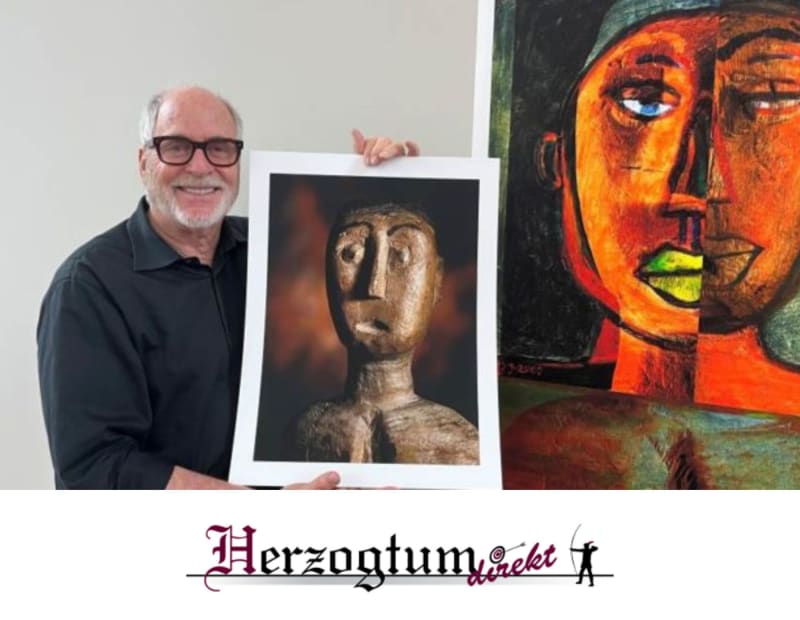"Lübeck(pm): In its new exhibition "HOMAGE", Lübeck's Kulturkirche St. Petri presents new views of African art. US photographer Greg Gorman and his artist colleague Gary D. Johns use photography and graphics to present the figures in a completely new light.
Greg Gorman, who lives in Los Angeles, usually photographs stars and is famous for his portraits. During the coronavirus pandemic, he was short of "living objects", so he decided to use portrait photography to showcase his collection of African tribal art. He took the individual figures, placed them in a bowl of rice to keep them from falling over and photographed them up to 25 times in the studio before creating the perfect image in Photoshop. "I would sometimes work 15 hours a day and complete three or four images in that time," says Gorman. The resulting photographs have a special appeal.
Artistic adaptation by Gary Johns
Gorman eventually persuaded his artist friend Gary Johns, also based in L.A., to work on the photographs using graphic and artistic means. Johns began to manipulate the photographs with textures, grids, photographs, painting, drawing, objects and collage techniques. The result is a series of dialogues that can be seen on the walls of the exhibition. Together they look at the original sculptures at the centre of the exhibition.
Originally, carvings often had a ritual function
Greg Gorman had been fascinated by African tribal art since his youth and began to build a collection. He found some of his objects at the Marché aux Puces flea market in Paris. The carvings, which are between 50 and 200 years old, originally had a symbolic function for tribal communities. For example, they represented the idea of a deity and could be used for ritual or religious acts. Through his use of light and shadow, Gorman emphasises the uniqueness of the works. Gary Johns' further development of the work reveals references to artists such as Pablo Picasso and Georges Braque, for whom African art was a source of inspiration.
Cultural appreciation instead of appropriation
What is important to Gorman and Johns is that they do not appropriate the art of African artists, but rather value it with their work and want to help them gain new attention. At the same time, Gorman and Johns' approach is based on the conviction "that new art is inconceivable without old art with its roots in myth and its complex processes of constant repetition and change", as the Hamburg art collector Harald Falckenberg summarises.
The exhibition "Homage - A Tribute To Tribal Artists" is in cooperation with the Overbeck-Gesellschaft Kunstverein Lübeck and can be seen in St. Petri zu Lübeck until Sunday, 27 August."


